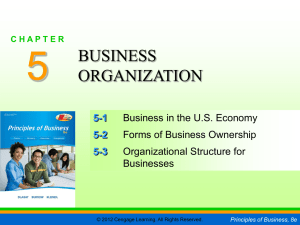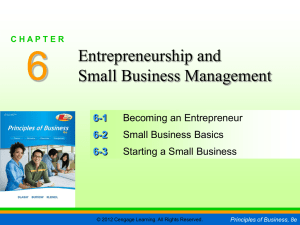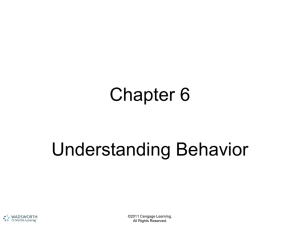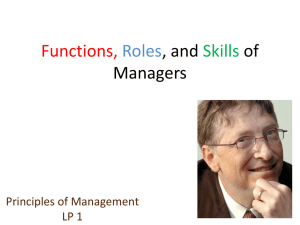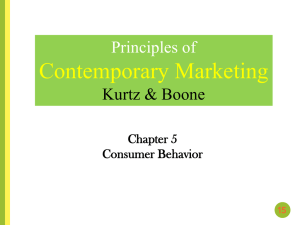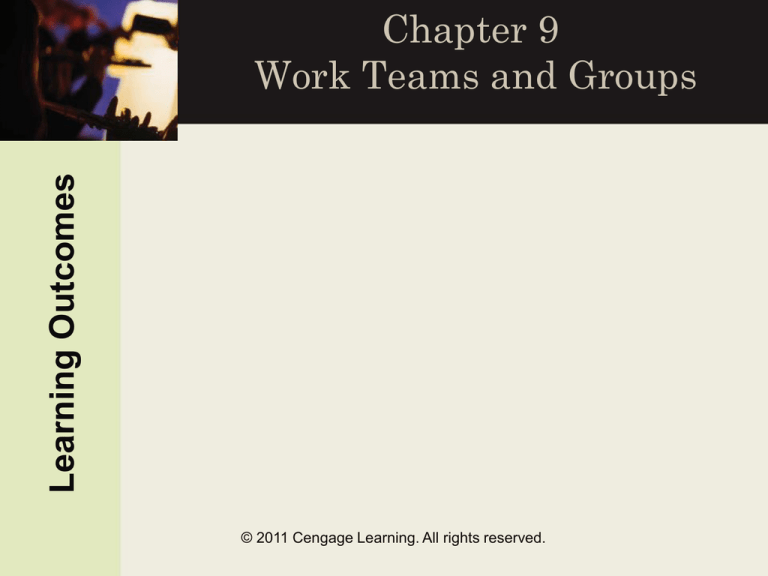
Learning Outcomes
Chapter 9
Work Teams and Groups
© 2011 Cengage Learning. All rights reserved.
Groups and Teams
GROUP – two or more people with common interests,
objectives, and continuing interaction
WORK TEAM – a group of people with complementary skills
who are committed to a common mission, performance
goals, and approach for which they hold themselves
mutually accountable
© 2011 Cengage Learning. All rights reserved.
Why teams?
• Good for work that is
complicated, complex,
interrelated and/or
more voluminous than
one person can handle
• Overcomes individual
limitations.
© 2011 Cengage Learning. All rights reserved.
New vs. Old Team Environments
© 2011 Cengage Learning. All
rights reserved.
Benefits of Teams
• For Organizations:
• Encourages collaboration
• For Individuals
• Psychological intimacy
• Integrated involvement
© 2011 Cengage Learning. All rights reserved.
Group Behavior
Norms of Behavior – the standards that a
work group uses to evaluate the
behavior of its members
Group Cohesion – the “interpersonal glue”
that makes members of a group stick
together
© 2011 Cengage Learning. All rights reserved.
Group Behavior
Social Loafing – the failure of a group
member to contribute personal time,
effort, thoughts, or other resources to
the group
Loss of Individuality – a social process in
which group members lose selfawareness and its accompanying sense
of accountability, inhibition, and
responsibility for individual behavior
© 2011 Cengage Learning. All rights reserved.
Group Formation
Formal Groups –
official or assigned
groups gathered to
perform various tasks
Informal Groups –
groups that evolve in
the work setting to
meet need not met
by formal groups.
In both, ethnic, gender, cultural and
interpersonal diversity is critical
© 2011 Cengage Learning. All rights reserved.
The Five Stage Model
© 2011 Cengage Learning. All rights reserved.
MATURE GROUP
CHARACTERISTICS
Purpose and Mission
• May be assigned or may emerge from the group
• Group often questions, reexamines, and
modifies mission and purpose
• Mission converted into specific agenda, clear
goals, and a set of critical success factors
Behavioral Norms
• Well-understood standards of behavior within a
group
• Also evolve around performance and
productivity.
© 2011 Cengage Learning. All rights reserved.
Group Cohesion
interpersonal attraction binding group
members together; enables groups to
exercise effective control over the members
© 2011 Cengage Learning. All rights reserved.
Groups with High Cohesiveness
• demonstrate lower tension and
anxiety
• demonstrate less variation in
productivity
• demonstrate better member
satisfaction, commitment, and
communication
© 2011 Cengage Learning. All rights reserved.
Cohesion
Factors influencing cohesion
Time
Size
Prestige
External pressure
Internal competition
Problems with: groupthink
© 2011 Cengage Learning. All rights reserved.
8-13
Cohesiveness and Work-Related Tension
© 2011 Cengage Learning. All rights reserved.
Status Structure
the set of authority and task relations among
a group’s members; can be egalitarian or
hierarchical
© 2011 Cengage Learning. All rights reserved.
Team Task Functions
those activities directly related to the
effective completion of the team’s work
© 2011 Cengage Learning. All rights reserved.
Team Task Functions
© 2011 Cengage Learning. All
rights reserved.
Maintenance Functions
those activities essential to the effective,
satisfying interpersonal relationships
within a team or group
© 2011 Cengage Learning. All rights reserved.
Team Maintenance Functions
© 2011 Cengage Learning. All
rights reserved.
Dissimilarity in Teams
• Demographic dissimilarity influences
absenteeism, commitment, turnover
intentions, beliefs, workgroup
relationships, self-esteem, and
organizational citizenship behavior.
• Can have positive or negative effects
on teams
• Value dissimilarity negatively related to
team involvement
© 2011 Cengage Learning. All rights reserved.
Empowerment Skills
Competence
Skills
Process
Skills
SelfManagement
or
Team Skills
Cooperative
Communication
and Helping
Skills
Behaviors
© 2011 Cengage Learning. All rights reserved.
Self-Managed Teams
also called self-directed teams or
autonomous work groups; teams that make
decisions once reserved for managers
© 2011 Cengage Learning. All rights reserved.
Upper Echelons:
Teams at the Top
Self-managed teams at the
top-level of an organization
Their background characteristics predict
organizational characteristics
Set standards for values, competence, ethics,
and unique characteristics in the organization
Key to the strategic success of the
organization
© 2011 Cengage Learning. All rights reserved.
5 Seasons of CEO Tenure
1.
2.
3.
4.
5.
Response to a mandate
Experimentation
Selection of an enduring theme
Convergence
Dysfunction
© 2011 Cengage Learning. All rights reserved.
Executive Tenure and Organizational Performance
© 2011 Cengage Learning. All
rights reserved.



